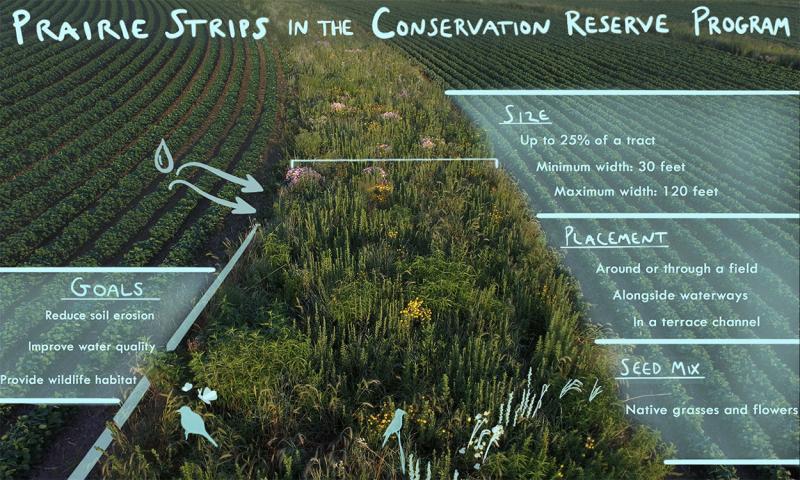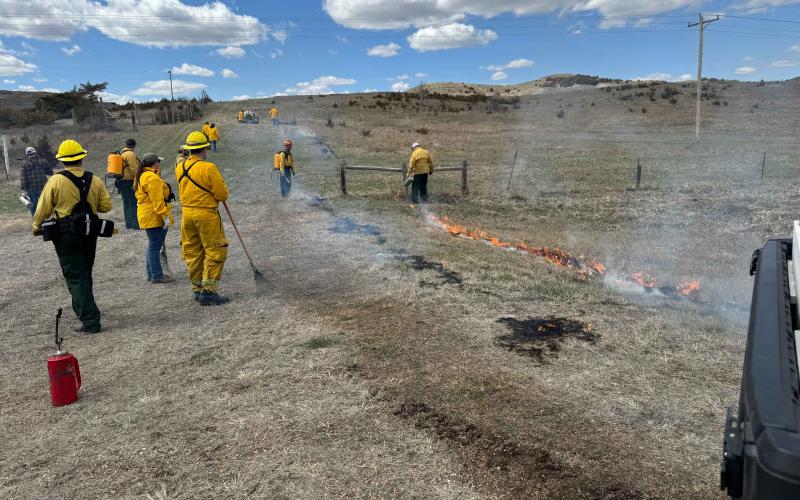
Prairie strips (CP43) are a new continuous Conservation Reserve Program (CRP) practice that integrates native prairie plantings oriented linearly within a row crop field to reduce soil erosion and runoff. Prairie strips are designed to intercept surface and subsurface water flow to remove nutrients, sediment and other pollutants through deposition, plant uptake, denitrification and other processes.
Prairie strips can be placed along the edge of a field, through the field, in terrace channels, next to waterways or in pivot corners. Prairie strips also provide needed pollinator habitat due to the mix of grasses and forbs. Grasses will compromise approximately 50% of the mix and forbs will include species that flower in the early, mid and late growing season.

Strips may not exceed 25% of the cropland area per tract and can range from 30 to 120 feet in width. While they cannot be used as travel lanes, strips planted as field borders may be used for equipment turning during normal field operations.
For more information on prairie strips and the Conservation Reserve Program, contact your local USDA Service Center.
Additional Resources
- South Dakota Pheasants Forever
- Find a Biologist: Find a Pheasants Forever Farm Bill biologist near you for conservation planning and implementation assistance.
- Science-Based Trials of Rowcrops Integrated with Prairie Strips, Iowa State University.


